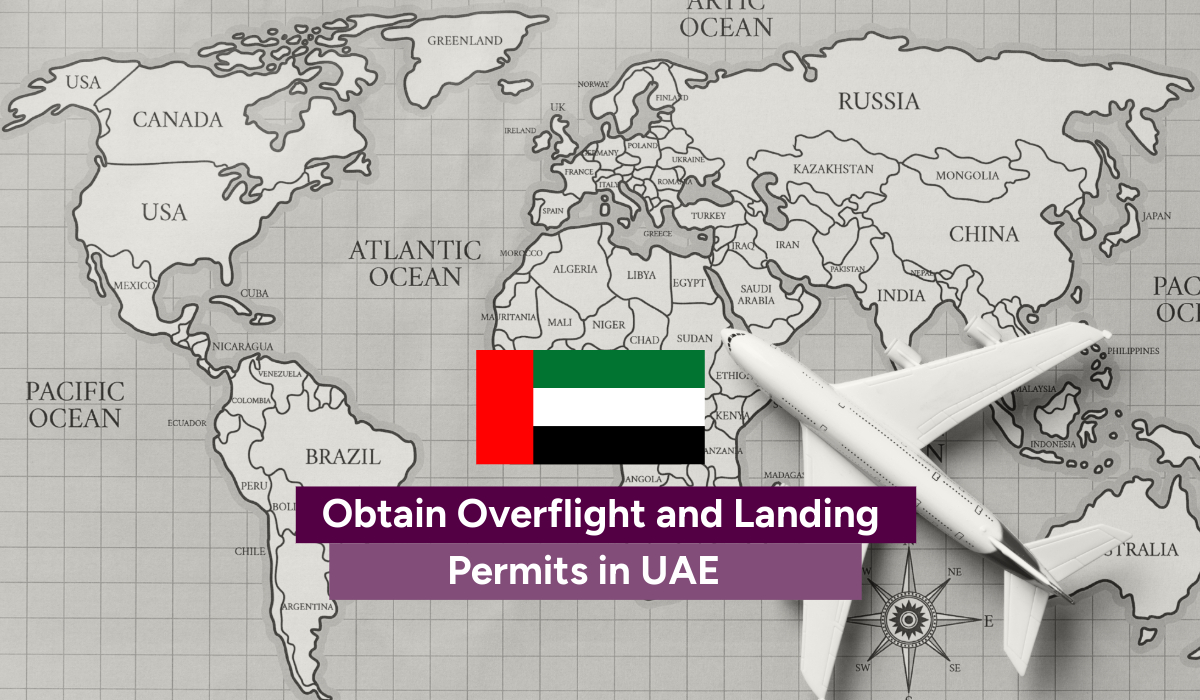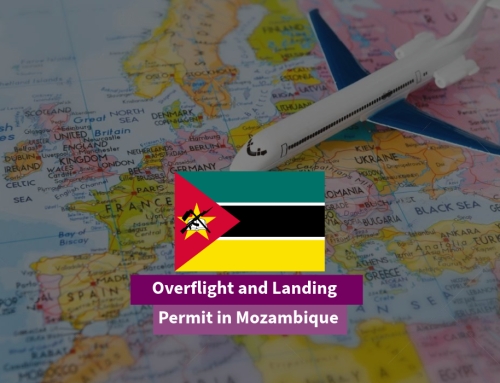Obtain Overflight and Landing Permits in UAE
Operating flights to or within the United Arab Emirates (UAE) requires commitment to specific permit regulations set by the General Civil Aviation Authority (GCAA). Here’s a concise guide to understanding these requirements:

Types of Flight Permits
- Landing Permits
- Requirement:
Landing permits are mandatory for all non-UAE-registered aircraft, including private non-revenue and charter (non-scheduled commercial) flights, intending to land at any UAE airport. - Application Process:
- Submission: Applications must be submitted to the GCAA.
- Documents Required:
- Aircraft registration certificate.
- Airworthiness certificate.
- Pilot licenses and crew documentation.
- Comprehensive flight itinerary.
- Proof of insurance covering operations in UAE airspace and airports.
- Passenger and cargo manifests, if applicable.
- Processing Time:
While permits are typically processed within 48-72 hours, early submission is strongly recommended to accommodate any delays or additional requirements.
- Conditions for Approval:
- Compliance with UAE aviation laws.
- Availability of airport slots, especially at busy hubs like Dubai International Airport (DXB/OMDB) and Abu Dhabi International Airport (AUH/OMAA).
- Requirement:
- Overflight Permits
- Requirement:
Overflight permits are not required for flights transiting UAE airspace. However, a filed and approved flight plan is mandatory. - Flight Plans:
Operators must ensure accurate flight plans are submitted to the appropriate authorities, detailing entry and exit points, estimated times, and routing.
- Requirement:
Key Airports in the UAE
- Dubai International Airport (DXB/OMDB):
- One of the busiest airports globally, serving as a hub for passenger and cargo flights.
- Abu Dhabi International Airport (AUH/OMAA):
- A growing hub with state-of-the-art facilities and increasing international traffic.
- Sharjah International Airport (SHJ/OMSJ):
- An important airport for low-cost carriers and cargo operations.
- Al Maktoum International Airport (DWC/OMDW):
- Focused on cargo and logistics, with plans to become a future mega-hub.
- Ras Al Khaimah International Airport (RKT/OMRK):
- Serves regional and leisure flights, especially for northern UAE.
Additional Considerations
- Accuracy: Ensure all submitted information and documentation are accurate and up-to-date to prevent processing delays.
- Compliance: Adhere to any specific requirements or regulations stipulated by the GCAA or individual emirate authorities.
- Coordination: Maintain clear communication with relevant aviation authorities and service providers to ensure smooth operations.
Why Choose the UAE for Your Operations?
The UAE’s modern infrastructure and world-class services make it an attractive destination for aviation operators. Some of the key benefits include:
- Strategic Location:
Positioned at the crossroads of major global routes, connecting Europe, Asia, and Africa. - Exceptional Services:
Ground handling, fueling, and airport facilities meet international standards. - Support for Operators:
The GCAA and airport authorities provide efficient systems for permitting and slot management.
Need help with Flight Permits ? click here






